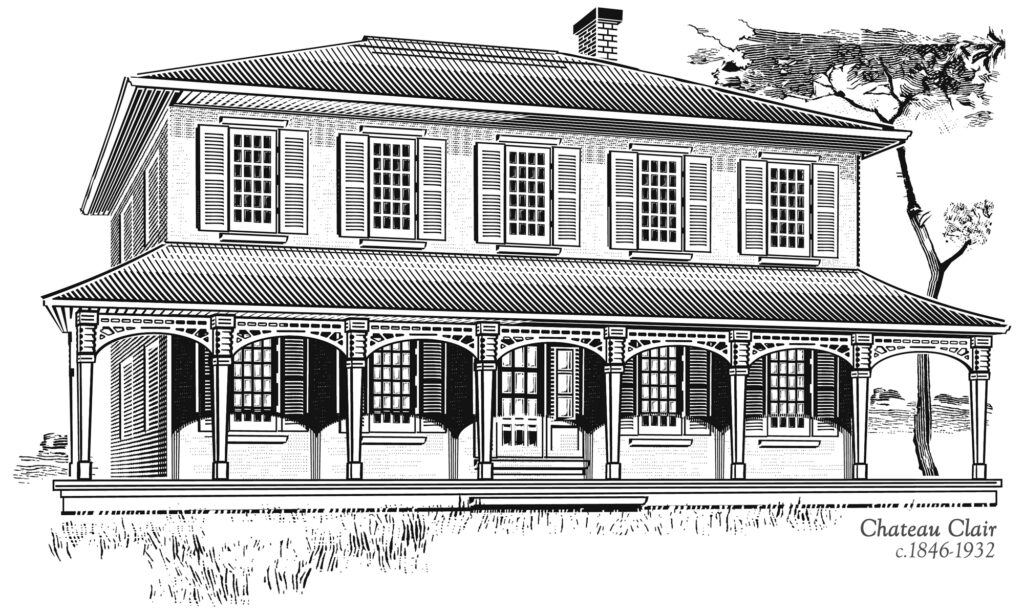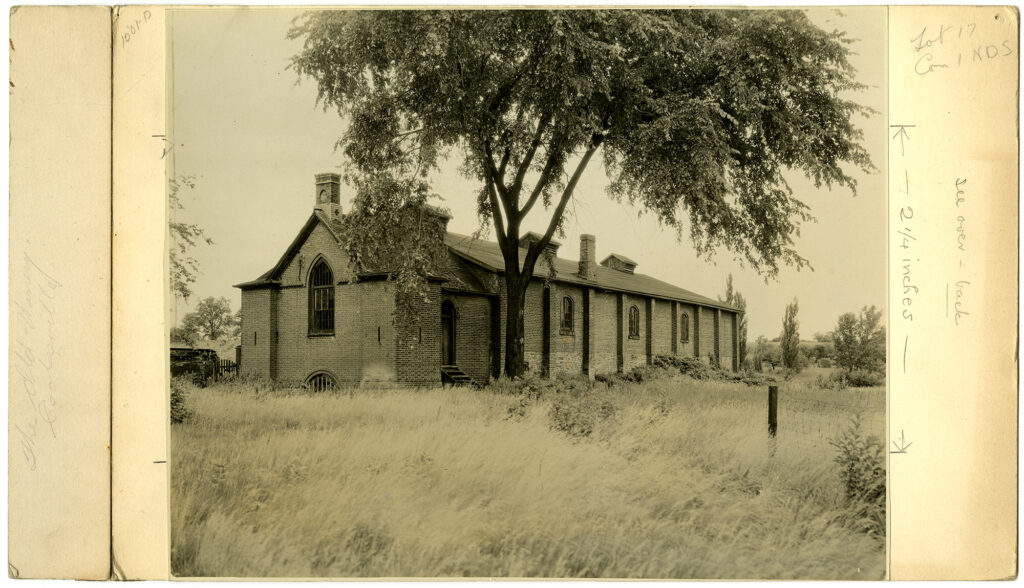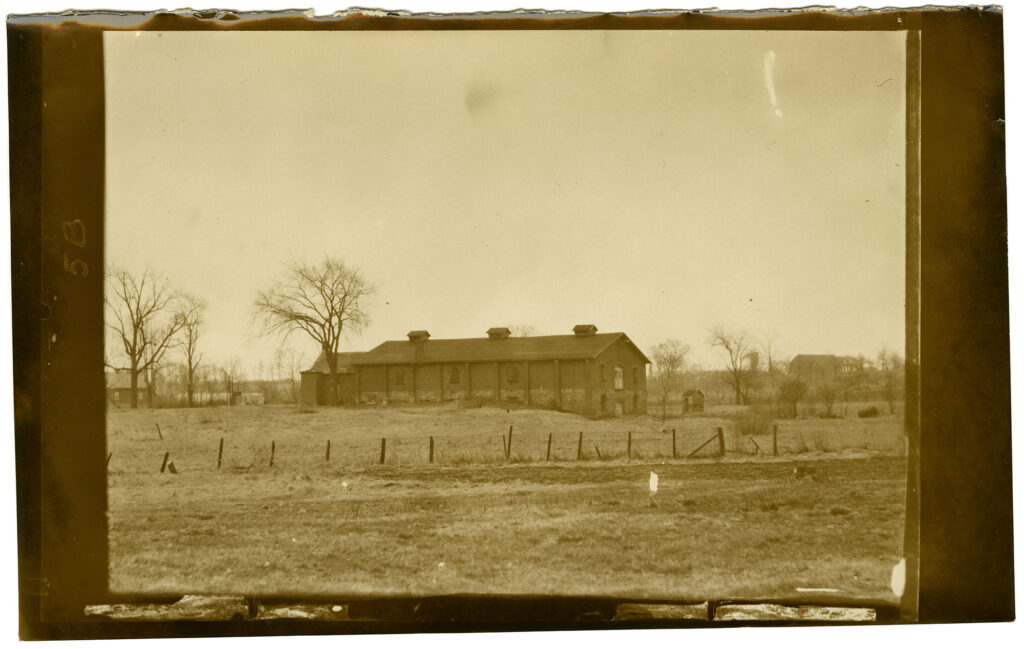As any start-up founder will tell you, you’ve gotta weather a lot of ‘nopes’ in search of your big break.
That’s as true now as it was in 1859 when Jason De Courtenay wrote to the colonial offices of the Department of Agriculture with a big idea: creating a Canadian wine and silk industry on the shores of Lake Ontario.
“Allow me positively to declare as a practical man,” he wrote, “that length and severity of the winter has nothing whatsoever to do with the production of either silk or wine.”
While colonial officials may have had their doubts, De Courtenay did not – and he found a willing investor in Henry Parker, a wine lover who happened to own a large estate near the shores of the Credit River: Clair House.
Purchased in 1841 by Rear-Admiral Sir William George Parker for Henry and his brothers Melville and Albert, by the mid-1850s Henry was keen to try his hand at winemaking.
There was only one problem. Henry, didn’t really know how to farm and he certainly had no clue how to cultivate grapes and turn them into wine.
That’s when he met De Courtenay, an Englishman who fashioned himself as a French aristocrat.
De Courtenay had wine-making experience, having trained in Europe and by the time Parker met him, De Courtenay had been trying unsuccessfully to convince the government of the time to underwrite the creation of a commercial wine industry in Upper Canada.
The pair hit it off and formed a joint stock company with Montreal-based investors, calling themselves the Canada Vine Growers Association and soon after wine-making commenced under the label Clair House winery in Cooksville.
It was Canada’s first commercial vineyard and winery.

An artist’s drawing of Clair House, the stately two-and-a-half-storey brick home built in 1841 by Rear-Admiral Sir William George Parker and home to Canada’s first commercial winery. The home burnt to the ground in 1932. (Photo credit: Heritage Mississauga)
De Courtenay didn’t just grow vines; he cultivated an image, one that would see his Clair House wines win a gold medal at the 1867 Paris Expositions, the only North American wine to do so.
However, despite its success, Clair House battled government tax regulations and protectionist tariffs.
In 1867 the newly formed Dominion Government of Canada’s new Act Respecting Inland Revenue included a clause that charged duty on any distillation agents used to ferment alcoholic beverages. At the time Canadian-grown grapes weren’t sweet enough so imported sugar was added during distillation.
The new duties made the cost of wine-making untenable for De Courtenay. Later that year Clair House Vineyard and Farm was put up for sale, consisting of a 30-acre vineyard, 17-acre orchard, two barns, stables and the two-storey brick house, which included hot air indoor heating.
It sold in 1869 to lawyer Solomon White and De Courtenay decamped to England.
Taking the reins in a declining market, White tried to distill a sense of luxury and health into Clair House’s brandy and wines. He also attracted investment from wholesalers in Toronto and Montreal, which increased distribution and Clair House wines continued to attract attention, winning a medal at the 1876 Philadelphia Centennial.

Wine vaults extended close to a quarter of a mile underground beneath the wine barn and the surrounding fields. By the time this photo was taken in the 1930s, Clair House had long ceased to produce wine. All that remains of Canada’s commercial winery is Parkerhill Road, once the driveway to the estate, now a residential street leading in and out of a subdivision bordered by at Confederation Parkway, Hillcrest Avenue and Dundas Street W, near T.L. Kennedy Secondary School in Cooksville. (Photo credit: Region of Peel Archives)
However now there was competition from new wineries opening in Niagara and Pelee Island and as the new century dawned, the Canada Vine Growers Association passed through a variety of owners.
First there was George Torrance, then Benjamin Murray, followed by cattle breeder Andrew Aikens and then finally in 1903, Achille Roumegous, a Frenchman who had previously owned the Lakeview Hotel in Toronto, purchased the winery for his son Leopold.
Clair House produced its last bottles of wine in 1925 and the following year the property was sold to William Berrege who converted it into a rabbit ranch.
In March 1932 a fire broke out in the Clair House home at 2:30 a.m., destroying the home. The 40 rabbits escaped the flames.

The vineyard barn where Clair House wine in the late 1800s. This photo was taken in the 1930s when ithe property had been converted to a rabbit ranch. Today the area includes the subdivision centred around Anastasia Terrace and Parkerhill Road, just west of Confederation Parkway near T.L. Kennedy Secondary School. (Photo credit: Region of Peel Archives)
At its height in the last quarter of the 19th century, the vineyard had included a large wine plant, vineyards and large wine vaults that extended close to a quarter of a mile underground.”
Today, the area just west of the intersection of Dundas Street and Confederation Parkway is home to families and small businesses clustered around Parkerhill Road, once the lane that led to Clair House, the Cooksville estate where Ontario wines first took root and won over the world.
You can hear more stories about the people and events that helped shape Mississauga via our podcast, We Built This City: Tales of Mississauga, available on your favourite podcast platform or from our website.
